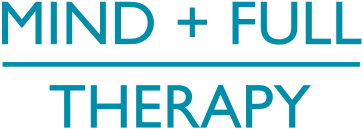Emotional Regulation 101: Understanding External, Co-Regulation, and Self-Regulation in Therapy (downloadable zine)
When life feels overwhelming, emotions can surge like waves: sometimes too fast, too big, or too intense to manage on our own. In therapy, one of the most important skills we work on is emotional regulation: how we understand, manage, and recover from strong emotional experiences.
But emotional regulation doesn’t only happen in isolation. It actually begins outside of us and gradually becomes something we can do for ourselves. That’s why therapists often refer to three types of regulation:
external regulation, co-regulation, and self-regulation.
Let’s break down what each of these means, how they show up in real life, and why understanding them can be so powerful in your healing journey.
1. External Regulation: The Beginning of Emotional Safety
What it is:
External regulation happens when another person manages or soothes your emotional state for you. This is most commonly seen in early childhood, when a baby cries and a caregiver steps in to soothe them by rocking, feeding, or holding them.
Why it matters in therapy:
Many of us didn’t grow up with consistent or safe external regulation. If your caregivers were unavailable, overwhelmed, or unpredictable, your nervous system may not have learned how to downshift from stress on its own. In therapy, we often begin by offering a safe and attuned environment, where your therapist becomes a regulated presence for you. This recreates that early experience of being held and seen emotionally.
Example:
A therapist might notice you’re becoming overwhelmed and gently say, “I see this is feeling heavy. Let’s take a breath together.” This is a form of external regulation, offering a regulated presence when yours feels shaky.
2. Co-Regulation: Healing Through Connection
What it is:
Co-regulation happens when two people help each other regulate in relationship. Unlike external regulation, which is one-way, co-regulation is more mutual and collaborative. It’s what happens when someone listens deeply, mirrors your emotions with empathy, and stays present with you.
Why it matters in therapy:
Co-regulation is the heart of relational healing. Many people come to therapy because they haven’t experienced safe, nonjudgmental connection before. In the therapy room, the client and therapist develop a relationship where co-regulation becomes possible. Over time, this builds your internal capacity to feel safe in the presence of others and eventually, safe within yourself.
Example:
You share something painful in session. Your therapist meets your emotion with compassion, maybe reflecting, “It makes sense that you’d feel that way.” As your nervous system senses this attuned connection, it begins to calm. You’re not alone in the feeling and that makes a difference.
3. Self-Regulation: Building Inner Stability
What it is:
Self-regulation is the ability to calm, center, and support yourself emotionally, especially in times of stress or overwhelm. It’s a skill that develops over time, often after repeated experiences of external and co-regulation.
Why it matters in therapy:
While no one is expected to self-regulate all the time (we’re human!), learning to self-regulate gives you more freedom and resilience. In therapy, we often explore tools like mindfulness, breathwork, somatic tracking, and boundary setting to support this.
Example:
After learning to notice your anxiety rising, you might practice grounding by naming things you see, hear, or feel. You remind yourself, “I’m safe right now.” That’s self-regulation, your internal system taking care of you.
Why All Three Types of Regulation Matter
In therapy, we don’t jump straight to self-regulation. We start where you are, which might mean rebuilding the foundation of external regulation through the therapist-client relationship. Over time, through co-regulation, your nervous system begins to trust connection again. And eventually, self-regulation becomes more accessible…not as a forced skill, but as a natural result of healing in relationship.
How Therapy Can Support Your Emotional Regulation Journey
As Mind+Full Therapy, we focus on helping clients move from overwhelm to confidence, not by pushing them to “be strong” alone, but by offering the support and relationship they may not have had before.
If you’re struggling with emotional ups and downs, anxiety, or trauma, learning about emotional regulation can be a life-changing first step. You don’t have to figure this out on your own.
Interested in learning how therapy can help you regulate and reconnect with yourself? Reach out today to schedule a consultation.
Frequently Asked Questions
1. Is it normal to struggle with self-regulation as an adult?
Yes, absolutely. If you didn’t receive consistent co-regulation as a child, your nervous system may not have learned how to regulate independently. Therapy can help rebuild that capacity.
2. What’s the difference between co-regulation and codependency?
Co-regulation is a healthy, mutual process of emotional support. Codependency often involves enmeshment or loss of boundaries. In therapy, we learn the difference and build healthier relationships.
3. How long does it take to develop self-regulation?
Everyone’s journey is different. With consistent therapy and relational safety, many clients begin to notice changes within weeks or months.
4. Can I practice self-regulation without therapy?
Yes, but therapy often accelerates the process by offering a space of external and co-regulation first. This can make self-regulation more sustainable and less lonely.
5. Do children also learn co-regulation in therapy?
Yes! Child therapists often focus on co-regulation with both the child and caregiver, creating safe patterns that support emotional growth.
6. What if I shut down emotionally instead of getting anxious?
That’s a form of dysregulation, too. Emotional shutdowns (also called hypoarousal) are common and can also be addressed through regulation work in therapy.
Final Thoughts
Understanding the three types of emotional regulation: external, co-regulation, and self-regulation, can change the way you relate to yourself and others. Whether you’re just beginning your therapy journey or deepening your work, remember: you don’t have to go it alone. Healing happens through connection, and regulation is something we can learn together.
Want a reminding to take with your about the different types of regulation?

